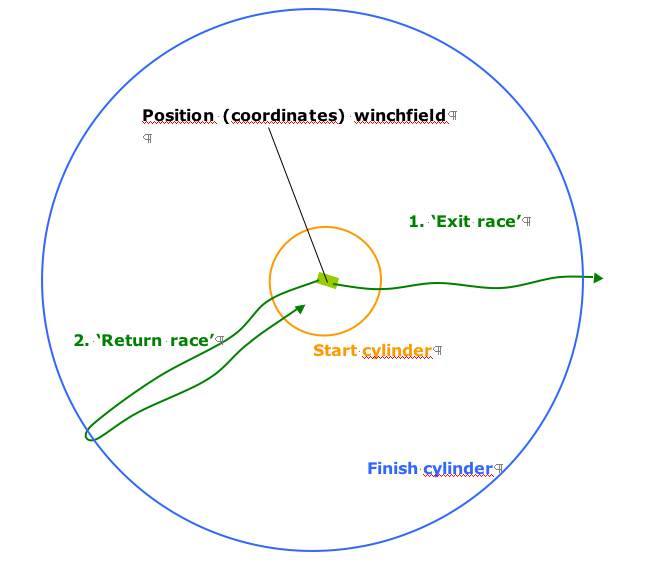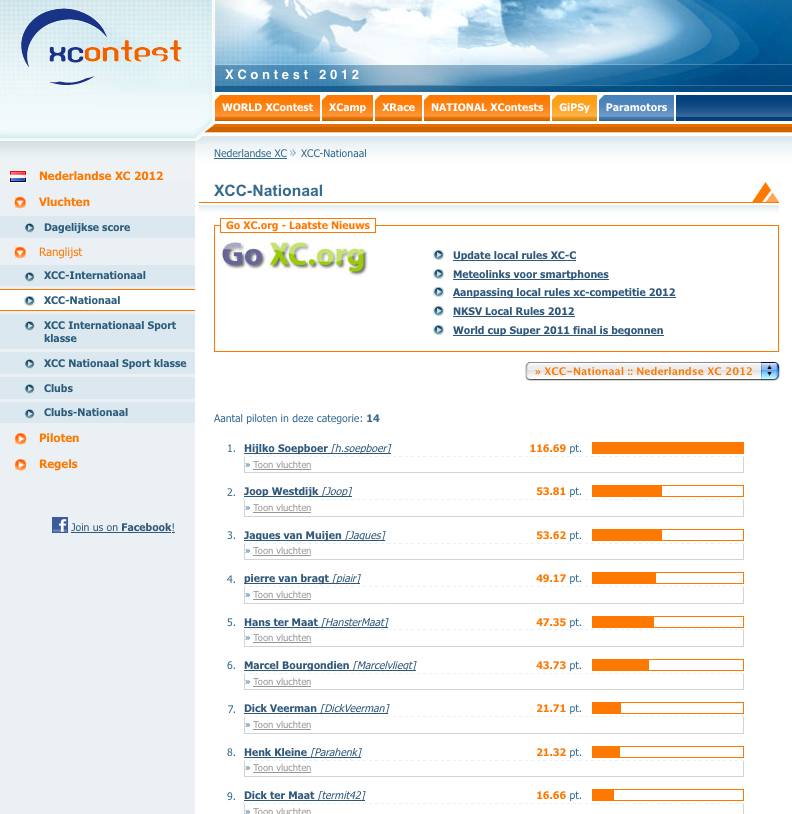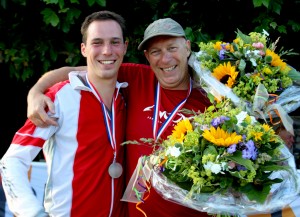By Chavert & Hans ter Maat (Nova Team Pilots)
Before I am going to explain how the Dutch flatland competition works, I will explain how we used to fly our Dutch Open competition in the past.
Well, it was similar to most competitions. We had a nice long weekend planned in which everybody who registered could compete. But there were some difficulties… As the Netherlands are quite flat we need a winch. Towing is nice but it takes some time, say 5 minutes per tow. So with 60 participants you would need 5 hours. With two winches it went a lot faster but still 2,5 hours. That means that the factor “luck” is of major importance and not that fair, like, as an example, the Start position. It was decided with a lottery. Another problem were the weather conditions. In the flatlands we have a sea climate, so lots of wind and rain and most of the times we were lucky with even one competition day.
The tasks were, because of the conditions, most of the time races over a certain distance, depending the weather condition somewhere between 25-70 km. We even had competitions in which the pilot who flew the longest distance won the task.
Too much luck involved was the consensus of the pilots and we started thinking of a different way of competing.
So we had to find something that would solve the weather challenges and the task. We came up with the idea to set tasks with cylinder races – but over a period of time.
But we had another challenge. Were to fly these tasks? There are about 15 towing places in the Netherlands. Hosting a competition day would mean the disturbing of a towing day for all other pilots? And furthermore, the wind direction could blow you right into a restricted or forbidden area. So we had to find something:
– Not depending wind direction.
– Minimizing the luck factor.
– Not depending bad weather conditions.
– Not disturbing a normal towing day.
– Same chances for every pilot.
– Easy for beginners and challenging for experts.
– Easy to organize.
This is what we came up with: Every weekend and public holiday in spring we set a challenging task. This task is sent to you automatically by SMS somewhere around eleven a clock on the competition day. So same chances for every pilot! The whole idea is that you can fly your task from every towing field in the Netherlands. That means that sometimes you are lucky and sometimes somebody else will have more luck, but, because the period that you can score points is two and a half months you minimize the chance that some have more luck than others! Including public holidays in that period you’ll have a possibility for about 15 tasks!!
So what do we do now? There are two possibilities:
1. Exit race: we start at a towing field and the start cylinder is big enough to give every pilot enough time to gain height. The start cylinder will never exceed 20 % of the race distance. Now you don’t need to choose a starting time but you can decide yourself.
When you want to start and because it’s a cylinder the point of exit can vary, so you are not depending the direction of the wind. The distance of the task will depend on how strong the wind is and the thermals. If you want to continue your flight after leaving the exit circle, you can and your flight will also enter the normal XC-contest.
2. Return race: With little or no wind, the task is out and return. Same rules. We can even extend this with a triangle task (two way points on the exit cylinder line).

Gathering points: At the end of the day we upload our tracks (IGC) on the XC-contest.
Especially for the Dutch competitions they developed a way to check distance and time and upload the results to the Dutch XC-contest. The best score gets 1000 points.

A print screen of the results after three tasks in 2012. From the 3 competition days we had only one day the possibility to score
If you continue flying after you succeeded your task, automatically the flight is uploaded in the “normal” XC-contest. So you will find your flight on two pages; the Dutch championship list and the normal XC-contest site.
To get points for the task minimal one pilot has to achieve the whole task.
The Finals:
The competition ends with a final weekend of two days with the 16 best pilots. To decide who are the best 16, they take the best 4 flights. So maximum you have 4000 points. The pilot who enters the final weekend with the most points can chose first from which position he likes to start (somewhere between 1 and 16). So you check the weather forecast, local conditions and you give your position and hope for the best. One tow can take you up to 700 to 800 meters. Per tow you have 10 minutes. After 10 minutes the winch driver will ask you to release.
Local rules: Most of the rules come from the international competitions but because of the special circumstances in the Netherlands there are some additional rules. You can find them here; http://www.goxc.org/images/stories/wedstrijden/NKSV_2010/lr_nksv-2010%20v1.6.pdf (in the Dutch language off course).

Chavert & Hans the numbers two and one in 2011 Dutch championship. Both Nova Team Pilots.

Till
May 29, 2012 -
I tell you what: even thjough it seems like a smart system, I prefer living in the Alps. I know, I am soooo mean!!
Till